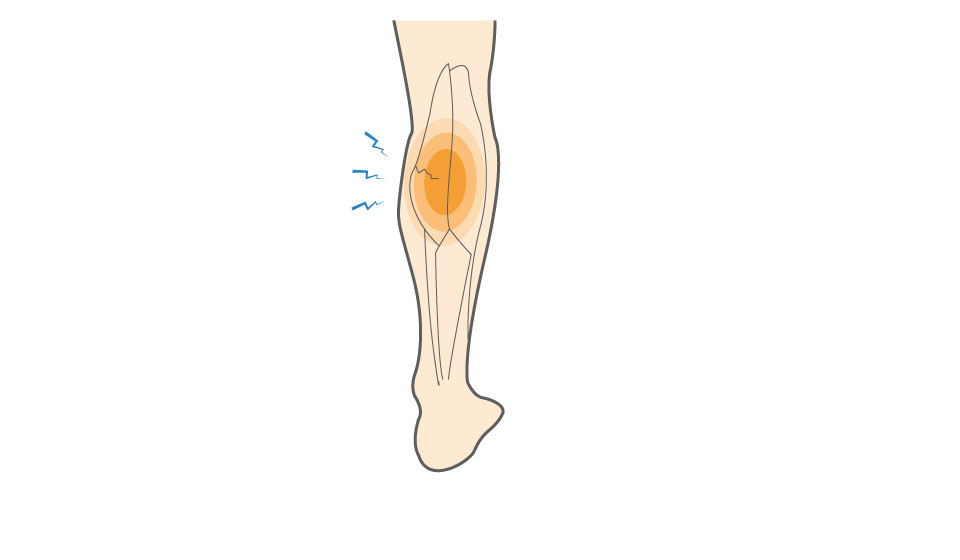The gastrocnemius muscle, commonly referred to as the calf muscle, is responsible for “jumping off” or acceleration movements. It is located on the back of the lower portion of the leg and is composed of two muscles: the medial (inner) head and the lateral (outer) head. The medial head attaches to the inner back side of the base of the femur (thigh bone), and the lateral head attaches to the outer back side of the base of the femur. The other end of the gastrocnemius muscle attaches to the Achilles tendon, the tendon that attaches the calf muscle to the heel bone, at ankle level.
A gastrocnemius tear can occur in different grades, each one classified by the severity of the injury:
- Grade I: A micro tear of the calf muscle
- Grade II: A partial tear of the calf muscle
- Grade III: The calf muscle is torn completely through, commonly referred to as a calf muscle rupture
The medial gastrocnemius muscle is more commonly injured than the lateral gastrocnemius muscle.


